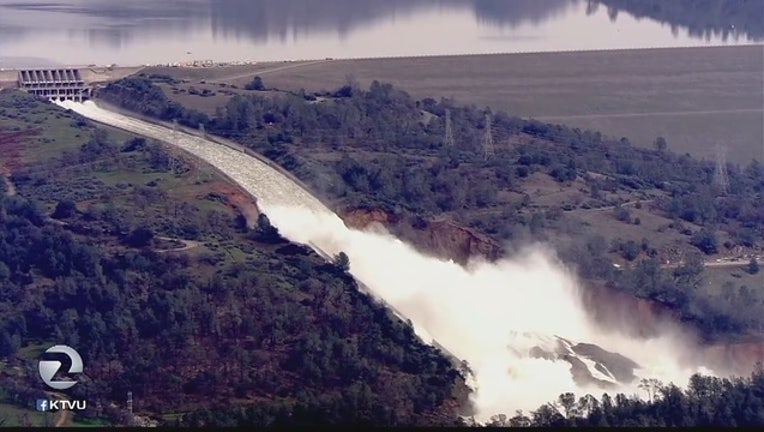California governor seeks $437 million for flood control

SACRAMENTO, Calif. (AP) - California Gov. Jerry Brown on Friday called for a boost in spending on water and transportation infrastructure as the waterlogged state grapples with an emergency dam repair, frantic levee fixes and catastrophic road damage caused by storms.
The Democratic governor redirected $50 million from the general fund for emergency response to flooding and asked state lawmakers to speed up $387 million in flood-control spending from a 2014 voter-approved water bond.
But his plan would address just a fraction of the $187 billion in unmet water and transportation infrastructure needs he identified. Brown said he didn't have "the full answer" on how exactly the state would generate enough money to shore up infrastructure but suggested tax increases would likely be needed.
"Despite what you hear from many conservatives, there has to be a very healthy public expenditure based on taxes," Brown said.
The governor also is seeking updates on flood inundation maps and emergency action plans as well as enhanced dam inspections.
Northern California has received more than twice the normal amount of rain and snow this winter following five years of drought.
In letters to officials in President Donald Trump's administration, Brown asked for an expedited environmental review to speed up what he characterized as the state's most urgent infrastructure needs.
He identified repairs at Oroville Dam and nine other projects, including high speed rail, major highway improvements in Southern California and the San Francisco Bay Area, and demolition of the old Bay Bridge.
Brown said he hopes the state will see $12 billion over each of the next 10 years as part of Trump's proposal to generate $1 trillion in infrastructure spending.
The governor deflected blame from himself and the Department of Water Resources for failing water infrastructure in the state, particularly the Oroville Dam, where two damaged spillways threatened massive flooding and caused an urgent evacuation.
"This is the way the world works," Brown said. "If we want to guard against any problem 100 percent, you'd have to quadruple the spending, and that wouldn't make any sense."
He downplayed the significance of concerns that environmental groups raised more than a decade ago about the safety of the emergency spillway at Oroville Dam. In 2005, three advocacy groups filed a motion with the Federal Energy Regulatory Commission that warned using the emergency spillway could cause significant erosion.
"I don't think that's very significant that an environmental group filed something," he said, noting that the state can never completely eliminate risks associated with infrastructure like the dam's massive earthen spillway.
___
This story has been corrected to show that Brown suggested tax increases would likely be required, not that they're the only way to address infrastructure needs.

